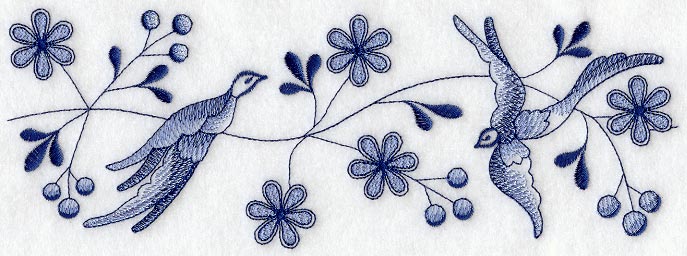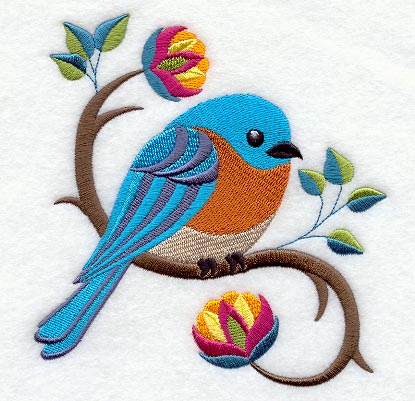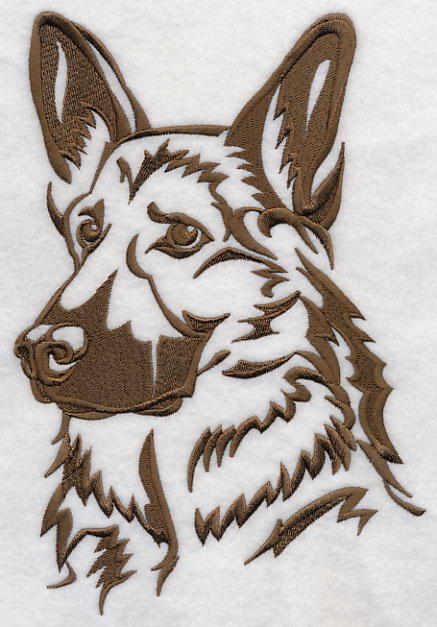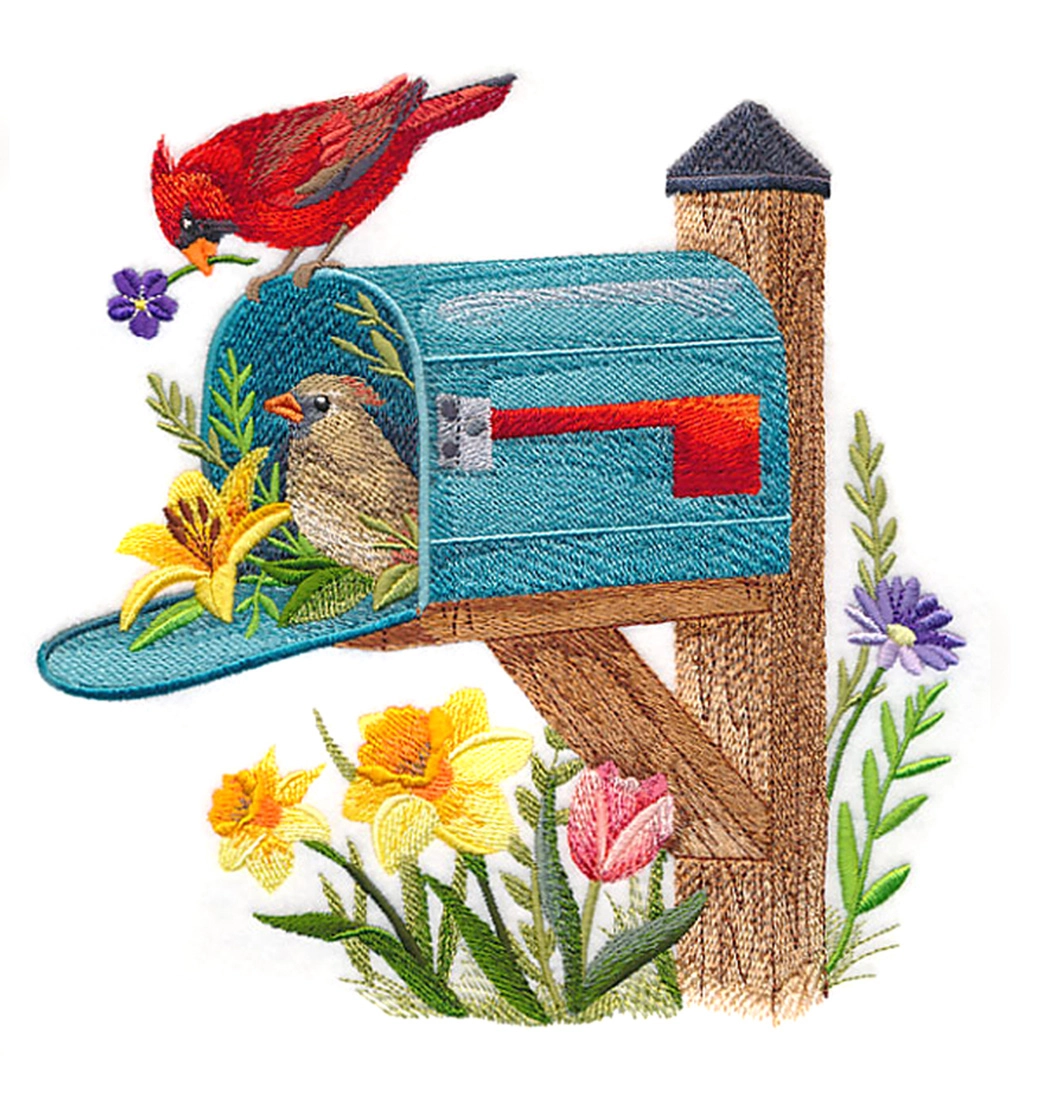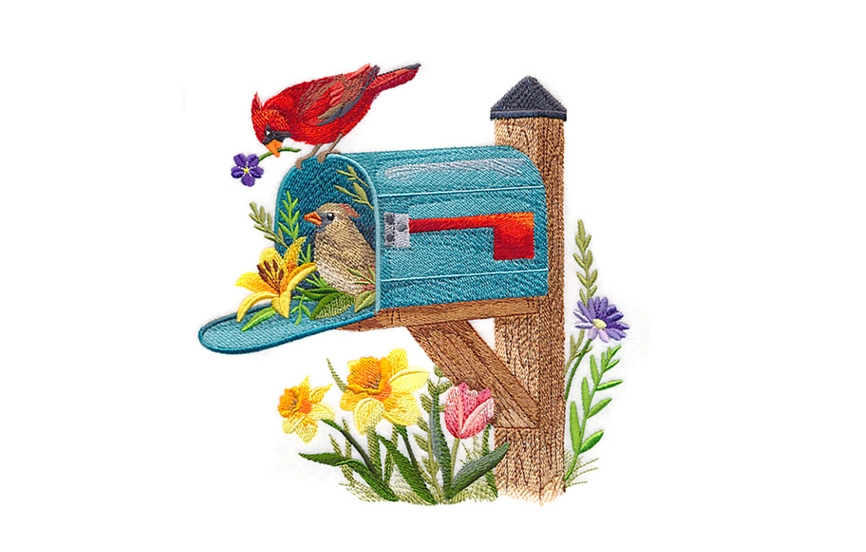When the weather grows cooler, moleskin makes an appearance. Pants, jackets, and vests are all made out of this sturdy, soft fabric. The soft, solid look is like a blank canvas for embroidery. Moleskin and embroidery are a natural match.
Once upon a time moleskin was only found in cotton; now it's more common to find it made of polyester. Cotton moleskin is woven, sheared, and brushed to create a short, soft
nap on one side. Polyester moleskin also has a low nap on the suede-like side.
Some moleskin includes a small amount of lycra or nylon to give a slight stretchiness. It is shiny and smooth on one side, and soft and suede-like on the other.
Read on for tips and tricks for embroidering on moleskin, and how to get great results!
Designs Used
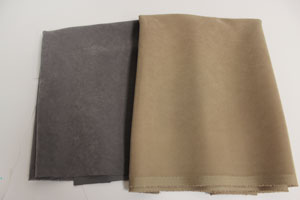
Types of moleskin
Moleskin is available from many online fabric retailers. I got mine from Joann.com. It was once only available in dark brown, but now comes in a variety of colors.
The fabric I used for testing is 97% polyester, 3% spandex.
Caring for the fabric
Moleskin fabric (especially cotton) will most likely shrink at least a little, so pre-washing is recommended. The laundering directions for the polyester fabric I purchased at Joann.com said to machine wash cool on delicate with no chlorine bleach, and to line dry. If you buy your fabric in the store, look for the washing instructions on the bolt.

Stabilizer
It's important to provide a solid foundation for the stitches, and this is done with stabilizer (aka backing). In my testing, I found that the best choice was cutaway stabilizer (better than tear-away, or wash-away).
Moleskin looks heavy and sturdy, and it's easy to think that tear-away or wash-away would do a fine job. But the "stretch" component in the fabric requires cutaway stabilizer. If you back moleskin with tear-away or water-soluble stabilizer, you'll likely see shifting and gapping in the design.
For this reason, and to keep the garment or item looking the best for the longest time, use one piece of cutaway stabilizer to stabilize the fabric.
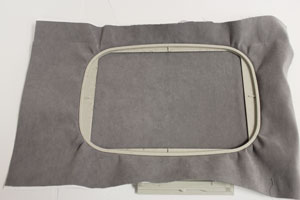
Hooping
Hoop moleskin just as you do most fabrics. Spray your stabilizer with spray adhesive (I use KK100), then smooth the fabric on top. Hoop the fabric and the stabilizer together, with the "fuzzy" side of the moleskin on top, and make sure they are held firmly in place. Since the fabric is synthetic, you shouldn't have to worry about hoop burn. Rubbing or washing the fabric will remove any marks made by the hoop.
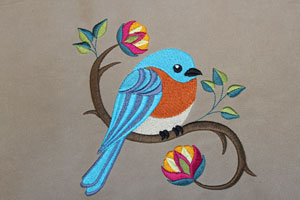
Choosing the right designs
Moleskin is a sturdy fabric that makes a great blank canvas for embroidery. I stitched a variety of designs and they all look fabulous on this fabric!
Stitch-filled designs such as the Perching Pretty Bluebird (left) work well on moleskin. I backed this design with a medium weight cutaway stabilizer to make sure the stitches didn't gap or pucker, with excellent results.
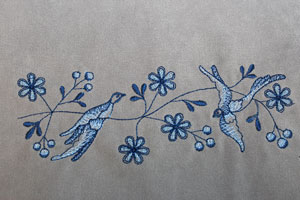
Lighter designs
Even though it has a slight pile or nap, moleskin is smooth enough for Redwork, Blackwork, toile, and sketch designs as well. The lighter stitches of the Blue Willow Border 2 (left) show up fine on the fabric.
Choosing lighter designs will also allow the fabric to drape nicely, something to keep in mind if you're making curtains or garments.
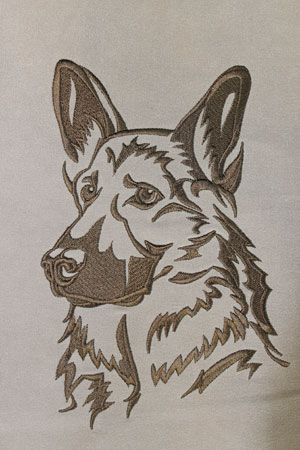
Silhouette success
Silhouette designs are excellent choices for moleskin, as the German Shepherd Silhouette (left) shows. The "fuzzy" pile of the fabric fills the open spaces with just enough texture to add a bit of extra dimension and depth to the embroidery. Perfect for a sensational pillow cover!
